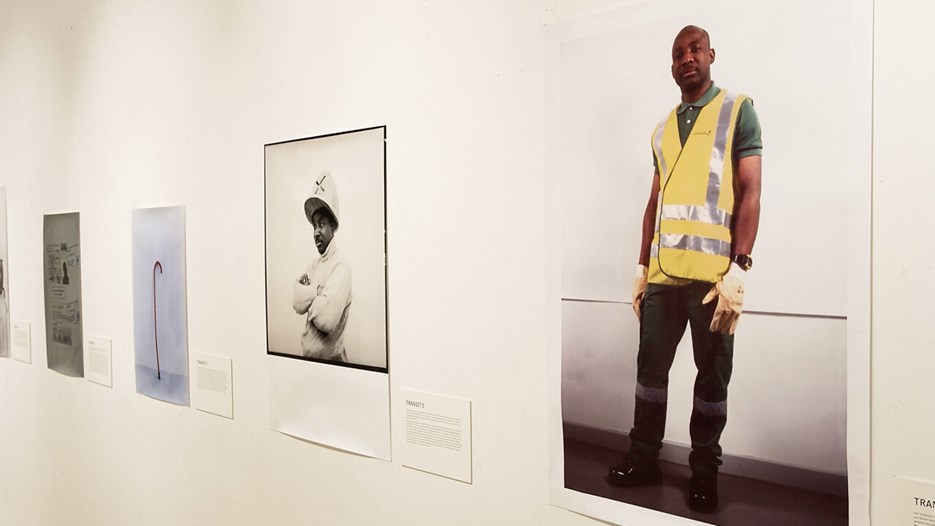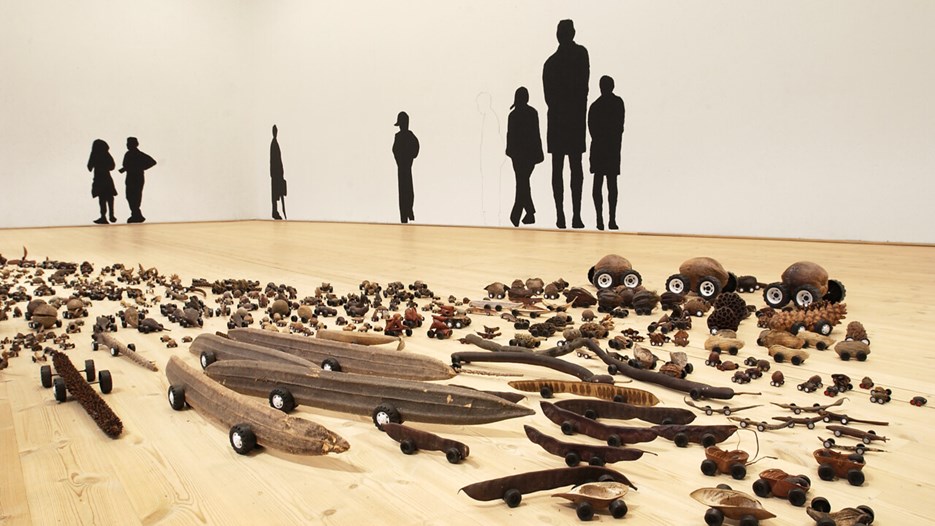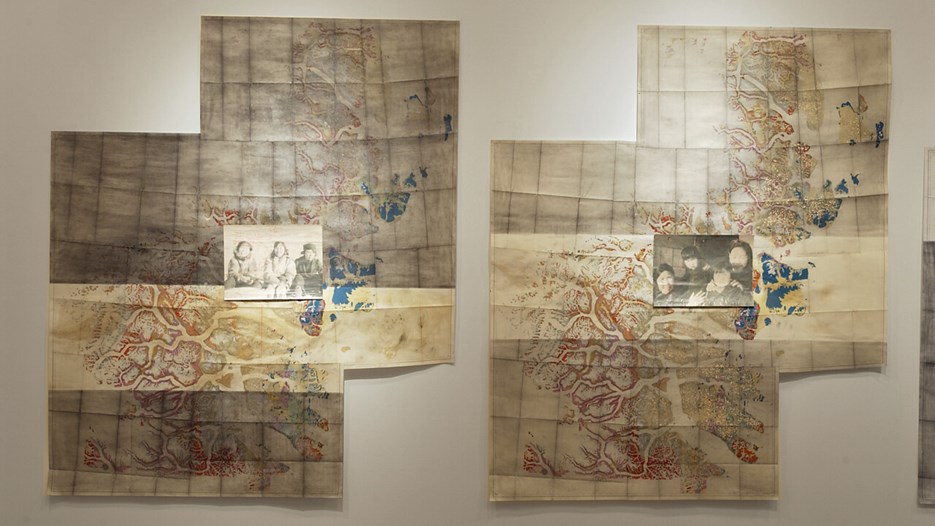
View from the exhibition Transfer at Bildmuseet, 2001

View from the exhibition Transfer at Bildmuseet, 2001

View from the exhibition Transfer at Bildmuseet, 2001
Pia Arke (Greenland/Denmark)
Oladele Bamgboye (England)
Carlos Capelán (Sweden/Spain)
FA+ / Ingrid Falk & Gustavo Aguerre (Sweden/Argentina)
Jårg Geismar (Germany)
Jamelie Hassan (Canada)
Anneè Olofsson (Sweden)
Sanna Sarva (Finland)
Fazal Sheikh (Kenya / Schweiz)
Lena Stenberg (Sweden)
Fiona Tan (Holland)
Barthelemy Toguo (France/Cameroon)
et al.
Curator: Jan-Erik Lundström, Bildmuseet
(An exhibition premiered at The 1st Tirana Biennale, Sept-Oct, 2001
under the exhibition title Killing Me Softly)
Expressions of exile have traditionally focussed the lost homeland; the disorientation, the ennui, even lethargy of the exilic space, in short exile as the place of loss, lack and nostalgic longing. The quest of identity be it cultural, ethnic, national, sexual, gender-related, or in the broadest sense individual - has likewise been characterized by the search for a particular hidden truth, for ideas of liberating the self, the repressed true authentic core of the individual, returning home, as it were, to the house of the self. Neither cultures nor selves do any longer hold such offerings. For all cultures, experienced as home or exile communities, the hybrid is norm, change is law, impurity standard. The exile experience of being between homes, languages, nations, cultures, lives, territories is a broad base, pattern and model for human experience altogether.
This, however, is not to excuse or disregard the immense powers emotional, intellectual, physical involved in exile narratives. Or the very real disruptions, disturbances and enormous losses individual and collective,direct and indirect amalgated through our age of forced emigration, mass refugee movements, involuntary exile and growing Diasporas. The nomadic life or the exile's space cannot be romanticised. Losses are real, lack is infernal, longing is deadly, yet, as such, the space of exile or the routes of the nomad, internal or external, are sites of production, they are in themselves active resistances.
The artist and the works in Killing Me Softly respond to, or, more directly, live with, this context; interrogating issues of cultural exchange, notions of home and exile, prejudice and transformation.
Killing Me Softly involves artists from Europe primarily Scandinavia, North America and Africa. The geographical or national origin is not decisive in terms of work content, but the kernel of the exhibition is a critique of European or Western cultural space, of current European and Western political economies, with works, for example, narrating European space as the space of exclusion; testimonies of all sorts of disrupted borders.
The exhibition, a short background
In response to the location of this biennale and its expressed thematic focus (Nomads and Hybridity), this exhibition focuses on notions of exile, immigration/emigration and travelling cultures. While a majority of the artists are from Scandinavia and the North of Europe, it is not an exhibition which aims to represent a region or a geographical entity. However, it is an exhibition which links certain notions of diaspora and exile within a North-European context (for example Fiona Tan, FA+, Carlos Capelán) with works considerate of a North-South axis (Bamgboyé, Sarva).
Tirana Biennale
The 1st Tirana Biennale while short in preparation will be a major art world event. It is to be seen both as an international meetingplace, a kind of Aperto, in its location next to Italy, and an event in support of an emerging infrastructure for art in a new- or re-born nation.
With over 30 curators from across the globe and more than 200 participating artists, it will extend to a powerful manifestation of the state of contemporary international art.
With the biennale is also produced a major catalogue (in Albanian, Italian and English), including 4 pages for each participating artist. Being done under the auspices of Giancarlo Politi Editore, the catalogue promises to be of fullest quality.